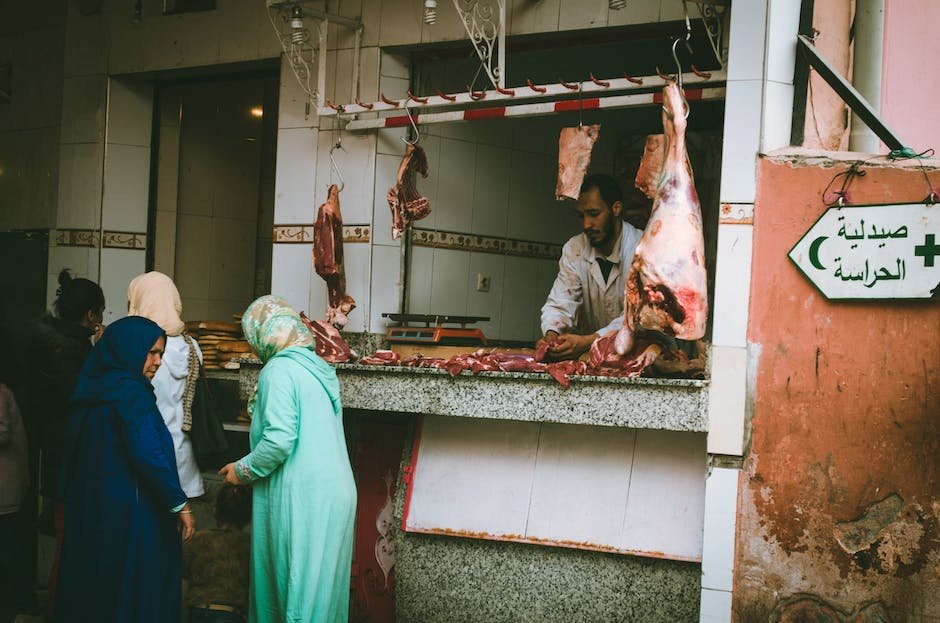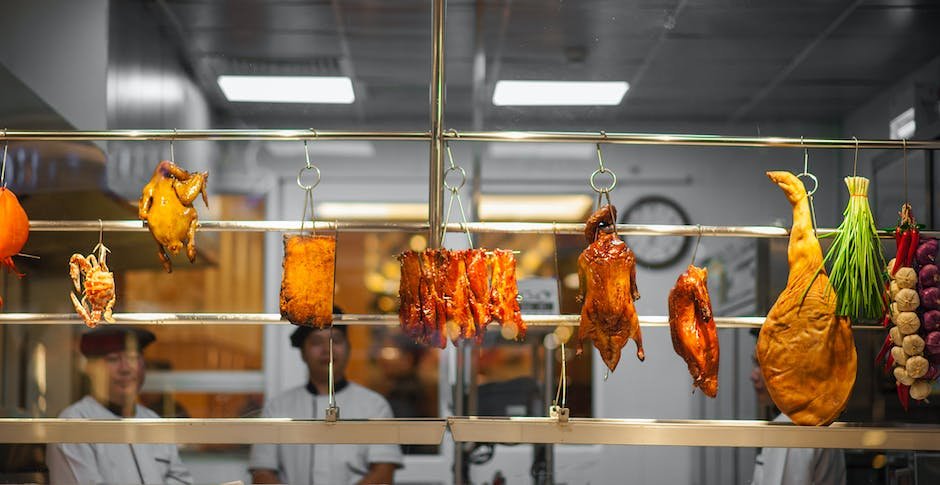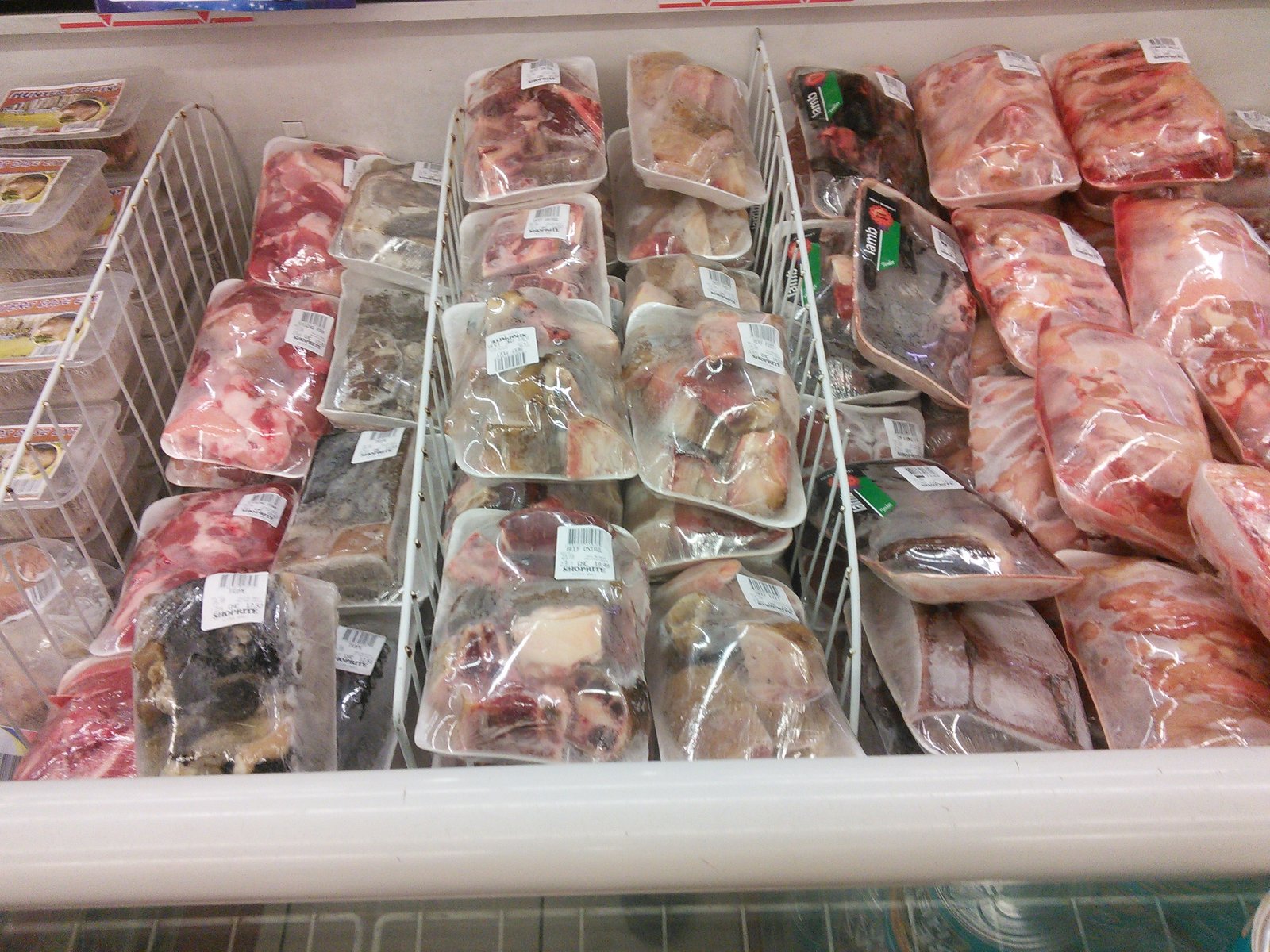Now Reading: How to Store Meat Safely Without Freezing
-
01
How to Store Meat Safely Without Freezing

How to Store Meat Safely Without Freezing
Whether you’ve recently embarked on a journey as a home cook, or you simply find yourself with an overwhelming amount of fresh meat, the need to safely store it becomes paramount. While freezing is often the go-to solution, there are situations where it may not be practical or suitable. Fear not, as we unveil the secrets to preserving meat without relying on sub-zero temperatures. From inventive preservation techniques to smart storage methods, this article will guide you through the art of keeping your meat fresh and flavorful, minus the frosty chill. Say goodbye to freezer burn and explore a world where safe meat storage goes beyond the boundaries of freezing.
Table of Contents
- Storing Meat at Optimal Temperatures to Ensure Safety
- Choosing the Appropriate Packaging Materials
- Utilizing Proper Organization and Storage Techniques
- Implementing Effective Strategies for Long-Term Meat Preservation
- Regular Inspection and Handling to Prevent Contamination
- Q&A
- Insights and Conclusions

Storing Meat at Optimal Temperatures to Ensure Safety
Ensuring the safety of meat is crucial to prevent foodborne illnesses and preserve its quality. By storing meat at optimal temperatures, you can significantly reduce the risk of bacterial growth and maintain its freshness for longer periods. Here are some essential guidelines to follow:
- Refrigeration is key: Always store raw or cooked meat in the refrigerator as soon as possible. Setting the temperature between 32°F and 40°F (0°C and 4°C) keeps the meat in the safe zone, preventing bacteria from multiplying rapidly.
- Separate and seal: To avoid cross-contamination, store each type of meat in separate containers or tightly sealed plastic bags. This prevents bacteria from transferring between different meats or onto other food items.
- Marinating with care: If marinating meat, refrigerate it immediately. Discard any excess marinade that has come into contact with raw meat to prevent bacterial contamination.
- Date and label: Remember to label containers with the date of purchase or storage to ensure you use the oldest meat first. This helps minimize waste and guarantees that you consume your meat while it is still at its best quality.
A little extra attention to the storage of meat can go a long way in maintaining its safety and taste. By adhering to these temperature guidelines and taking necessary precautions, you can savor the flavor of your meat while keeping your health intact.

Choosing the Appropriate Packaging Materials
Types of packaging materials:
- Cardboard boxes: A popular choice for packaging due to their sturdiness and versatility. They come in various sizes, making them suitable for a wide range of products.
- Air-filled plastic bags: These lightweight and flexible bags provide protection against shock and vibrations during transit. They can also be re-inflated and reused.
- Bubble wrap: Perfect for protecting fragile items, bubble wrap has air-filled bubbles that provide cushioning and prevent breakage. It comes in rolls of different widths and can be easily cut to size.
- Biodegradable packing peanuts: Made from cornstarch or other natural materials, these packing peanuts are environmentally friendly and can be easily dissolved in water, reducing waste and harm to the ecosystem.
- Wooden crates: Ideal for heavy and bulky items, wooden crates offer excellent strength and durability. They can be customized to fit the specific dimensions of your product.
Considerations when choosing packaging materials:
- Product fragility: Ensure that the packaging material provides adequate cushioning and protection to prevent any damage or breakage during transportation.
- Weight and dimensions: Select packaging materials that can handle the weight and size of your product without compromising its integrity.
- Environmental impact: Opt for eco-friendly packaging materials to minimize your carbon footprint and align with sustainable practices.
- Cost-effectiveness: Evaluate the cost of different packaging materials and balance it with the level of protection required for your product.
- Branding opportunities: Consider packaging materials that offer customization options, allowing you to promote and enhance your brand identity.
is crucial for ensuring the safe transport and delivery of your products. By considering factors such as fragility, weight, environmental impact, cost, and branding opportunities, you can select the materials that best meet your specific needs. Invest in high-quality packaging to protect your items and leave a lasting impression on your customers.

Utilizing Proper Organization and Storage Techniques
can greatly enhance efficiency and productivity in both personal and professional settings. By implementing effective strategies, you can streamline processes, save time, and optimize your workspace.
One crucial aspect of organization is decluttering. Start by assessing your belongings and determining what is necessary and what can be discarded. Utilize storage solutions, such as shelves, drawers, and containers, to keep items neat and easily accessible. Labeling containers and sections will help you quickly locate specific items when needed.
Next, establish a system for categorizing and arranging objects. Whether it’s in your office, kitchen, or garage, having a logical order makes finding things effortless. Consider using numbered or bullet lists to outline your categories and subcategories. For instance, in a pantry, you may create sections for grains, canned goods, spices, and snacks. By ensuring everything has its designated place, you minimize the chance of clutter and maintain organizational harmony.
Moreover, make use of digital tools to maximize your organization potential. Cloud storage and productivity apps allow you to store and access important files and documents anytime, anywhere. Emphasize the importance of backing up important data regularly to prevent any loss or damage.
By implementing these proper organization and storage techniques, you will experience increased productivity, reduced stress, and a clutter-free environment that promotes focus and efficiency. Invest the time and effort now to organize your space and establish effective habits. Your future self will thank you!
Implementing Effective Strategies for Long-Term Meat Preservation
Preserving meat for long periods of time is essential for those who want to ensure a constant supply of fresh and safe protein. can be a game-changer, allowing you to stock up and enjoy your favorite cuts whenever you desire. Here are some tips and techniques to help you achieve this:
- Drying: One of the oldest methods, drying meat involves removing the moisture to prevent bacterial growth. It can be achieved through air drying, smoking, or using a dehydrator. Properly dried meat can be stored for extended periods without refrigeration, making it perfect for camping trips or emergencies.
- Curing: Curing is a process that involves using salt, curing agents, and spices to preserve meat while enhancing its flavor. This technique is commonly used for bacon, ham, and sausages. Cured meat can be stored at cooler temperatures and can last for weeks or even months.
- Canning: Canning is a reliable method that involves placing cooked meat in sterilized jars and sealing them with lids. The jars are then processed in a pressure canner to kill bacteria and create a vacuum seal. Properly canned meat can be preserved for years, providing a convenient and shelf-stable option for long-term storage.
- Freezing: Freezing meat at temperatures below 0°F (-18°C) is a widely used preservation technique. It slows down enzymatic activity and bacterial growth, maintaining meat quality over an extended period. Vacuum-sealing or wrapping meat tightly in freezer-safe packaging before freezing helps prevent freezer burn and improves longevity.
By utilizing these effective meat preservation strategies, you can ensure that your meat remains safe, delicious, and in good condition for long periods. Experiment with different methods to find what works best for your needs, and enjoy the convenience of having a well-stocked meat supply at your fingertips.
Regular Inspection and Handling to Prevent Contamination
Regular inspection and proper handling play a critical role in maintaining a contamination-free environment. It is essential to take proactive measures to prevent any potential contamination risks. Here are some key steps to incorporate into your routine:
- Implement regular inspections: Conduct thorough inspections of the premises on a regular basis, ensuring that all areas are examined. Pay close attention to high-risk zones such as production areas and storage facilities. These inspections should include assessing equipment cleanliness, checking for any signs of pest infestation, and verifying compliance with health and safety regulations.
- Establish effective cleaning protocols: Clearly define and enforce a cleaning protocol to ensure a sanitized environment. This includes regular disinfection of surfaces, equipment, and utensils. Make sure to use appropriate cleaning agents and techniques for specific areas and materials.
- Train staff on proper handling and hygiene: Educate your team on proper handling techniques and emphasize the importance of personal hygiene. Provide comprehensive training sessions covering topics such as handwashing, wearing appropriate protective gear, and following standard operating procedures (SOPs).
- Implement rigorous quality control measures: Regularly test and sample products to ensure they meet the required quality standards. Monitor raw materials, intermediate products, and end products for any signs of contamination. Maintain a comprehensive record of quality control tests and inspections.
By adhering to these practices, you can minimize the risk of contamination and maintain a safe and hygienic environment for your workforce and customers. Remember, prevention is always better than dealing with the consequences of contamination.
Q&A
Can I store meat safely without freezing it?
Yes, it is possible to store meat safely without freezing it. There are several methods you can use to ensure the meat remains fresh and safe for consumption without the need for freezing.
What are some non-freezing methods of storing meat?
Some non-freezing methods of storing meat include refrigeration, curing, smoking, and using food preservatives. These methods help to inhibit the growth of bacteria and extend the shelf life of the meat.
How long can meat be stored in the refrigerator?
Meat can generally be stored in the refrigerator for 3-5 days, depending on the type of meat. It is important to make sure the temperature of the refrigerator is set below 40°F (4°C) to prevent bacterial growth.
What is curing and how does it help store meat?
Curing is a preservation method that involves adding salt, sugar, or nitrates to meat. This process helps to draw out moisture and inhibit the growth of bacteria, extending the shelf life of the meat.
Can I store meat safely by smoking it?
Yes, smoking is a popular method of storing meat safely. The smoke acts as a natural preservative, adding flavor and inhibiting the growth of bacteria. However, it is important to follow proper smoking techniques and maintain the right temperature for safe storage.
Are there any food preservatives I can use to store meat?
Yes, there are commercially available food preservatives that can be used to store meat. These preservatives help to prevent spoilage by inhibiting the growth of bacteria, yeast, and mold. Always follow the instructions and recommended dosages for safe usage.
What are some tips for storing meat safely?
To store meat safely, it is important to keep it at a proper temperature, below 40°F (4°C), whether by refrigeration or other methods. Additionally, ensure the meat is properly cleaned, seasoned, and sealed to prevent contamination or spoilage. Regularly check the meat for any signs of spoilage before consumption.
Insights and Conclusions
As we wrap up this journey into the world of safe meat storage, it’s clear that preserving the deliciousness of those juicy cuts doesn’t always require the icy grip of freezing. By following these simple yet effective methods, you can ensure your meat remains fresh, flavorful, and free from any unwanted surprises.
Remember, the key lies in the balance between temperature, moisture, and air circulation. Whether it’s the art of dry aging, embracing the charms of curing, or exploring the wonders of dehydrating, there’s a method for every meat lover out there.
So bid farewell to the constraints of your freezer, and discover the wide range of possibilities that lie beyond its chilly realm. Allow your culinary repertoire to expand as you delve into the mysteries of traditional techniques, slowly transforming raw cuts into delectable creations.
Embrace the aromas that magically develop as flavors concentrate through air drying. Revel in the punchy profiles born from skillfully curing your very own bacon or prosciutto. And immerse yourself in the adventure of crafting tender jerky, perfect for on-the-go snacking.
While these alternative methods may require patience and precision, they reward you with unparalleled taste and unrivaled satisfaction. With a bit of care and creativity, you’ll be treating yourself to the treasures of safely stored meat, without relying solely on subzero temperatures.
No longer bound by the cold confines of your freezer, you are now equipped with the knowledge to explore the world of meat preservation in its many forms. So go forth, fellow meat enthusiasts, and unlock the art of storing meats without the need for freezing.
Remember, practice makes perfect, and as you embark on your own meat storage adventures, don’t be afraid to experiment. With each creation, you inch closer to culinary mastery and the ability to savor your favorite cuts in their prime.
Together, let’s revel in the age-old traditions of ensuring that no morsel of meat goes to waste, and that every bite we savor is worth the anticipation it brings. Happy meat storing, bon appétit, and may your kitchen be filled with the delightful aromas of preserved meats for many delicious meals to come!
As an affiliate, my content may feature links to products I personally use and recommend. By taking action, like subscribing or making a purchase, you’ll be supporting my work and fueling my taco cravings at the same time. Win-win, right?
Want to read more? Check out our Affiliate Disclosure page.





